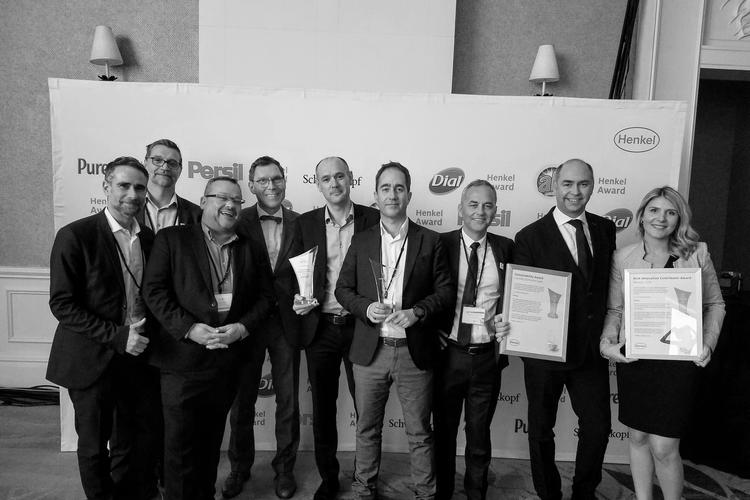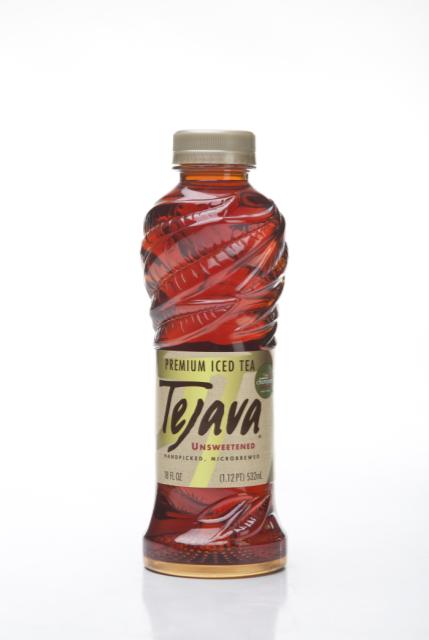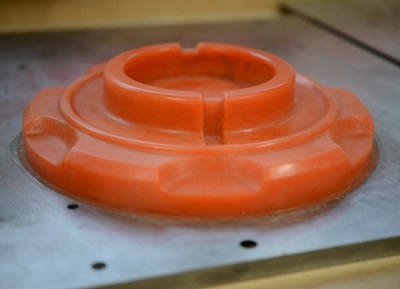A British blow moulder has become the first in Europe to produce 4 and 5 litre handled containers in extrusion blown PET which it says offer aesthetic improvements and cost reductions over HDPE and go where stretch blow cannot.
Northumbria Blow Mouldings of Newcastle has invested more than £300,000 over the past 10 months to develop its Nemesis bottles and is currently in discussions with three “blue chip household chemicals companies”. The potential in household chemicals lies in replacing HDPE containers which have to be fluorinated before filling, adding both to cost and the carbon footprint of the product. An alternative might be to use PVC, but many companies are shying away from PVC containers because of their environmental image.
Northumbria is also talking to food and beverage brands for which the bottles offer the high clarity and gloss of PET for bulk packs without the add-on handle compromise needed for stretch-blown PET. It also enables bottle designs with angled necks and other design features beyond what is possible with stretch blow.
The material used for the Nemesis bottles is Eastman Chemical’s Eastar EB062 copolyester, which was introduced at the K2007 exhibition being blown into handled 2 litre bottles by Bekum. Developments in the USA have taken the bottle scale up to 5 litres, but according to Eastman nobody else in Europe is producing handled bottles of this size. The material is modified from the company’s stretch blow grades, with greater melt strength to produce the parisons needed for large EBM bottles. Eastman says it is compatible with the PET post consumer recycling stream at levels in excess of likely loadings, and can carry the “1 PET” recycling logo.
Eastar is around twice the price of HDPE – and a bit more – but according to Northumbria Blow Mouldings managing director Brian Wiper, it yields economies that counter this price differential. When needing chemical resistance the expensive fluorination process can be eliminated and there are also bottle production savings: Eastar EB062 runs twice as fast as HDPE, and needs less blow air pressure. It also needs less cooling, which is partly responsible for the reduced cycle time. The material does, however, need careful drying and part of Northumbria’s investment has been in drying equipment.
Tooling requirements are different – for instance HDPE needs a bead-blasted surface but PET can mould in a polished tool. For the development of the Nemesis bottles Northumbria Blow Mouldings worked with specialist blow moulding toolmaker Beaubury Precision Moulds, and between them they have devised tooling which can run with both PET and HDPE, enabling the Nemesis range to be offered in both materials. This will also allow customers’ existing PVC or HDPE tooling to be be adapted to run with PET.
Northumbria Blow Mouldings has two machines set up for Nemesis. It bought a new Automa single station machine, and has adapted an existing twin station Uniloy previously used for PVC: adaptation is not a major issue because Eastman recommends an extruder set-up more akin to PVC rather than using a high compression screw designed for HDPE. Northumbria has plenty of experience of translating PVC to PET as it took over the Audus Noble sweet jar business in 2006 and has since converted it to PET.
Source: britishplastics.co.uk







